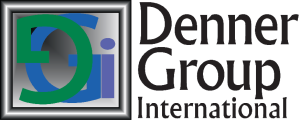Volunteer Burn-Out is a Non-Profit Dilemma
Takeaways: 1) Age demographics and volunteer burn-out are dilemmas for member-based non-profit organizations, 2) Why clear and concise communication is paramount, 3) Why change must be embraced with a revolutionary approach.
Member-based non-profits inherently are subject to the dreaded disease of volunteer burn-out. As I scan the world for member-based non-profits and consider their membership age demographics, two things are crystal clear.
First, the most obvious one is a seriously older demographic, from the few members left of those who were adults in the mid 1900’s to the huge population of baby-boomers worldwide.
Second, very few of those organizations are working really hard at recruiting and engaging new members of ages 25 to 45. Those that are, struggle to connect across the generational chasm that has generally tripped up humanity for centuries.This has deepened in the last 170 years with the rapid cultural changes brought on by technological advancements.
Balancing planning with action is a common struggle for non-profits, and if they are membership-based, perhaps even more so. This may be more evident among organizations that are 30 years or older, but it also affects those that are newer and have instituted some mature processes and structures.
I am looking at two very worthy member based non-profits. One is experiencing continued success but mild growth in membership. All of its programs are very well received by the communities it serves and its members are overwhelmingly deeply engaged. The other is experiencing membership decline, slow action among its leadership, a lot of activity in planning for the short and long term, and is struggling with its value proposition and member engagement. The first one is over one hundred years old, the other a respectable 15 years young.
A common thread I find in successful organizational development continues to be that of clear and concise communication. Communication of vision, values and goals in a timely and simple manner continue to be the key ingredients to successful member engagement. Why? Because it provides key support and direction to the leaders of the local groups to keep everyone moving toward the same overarching goals.
I see a number of aspects to what I call The Maturity Dilemma. One is that mature member-based organizations generally have a long-established way of doing things that worked for their generation of members. This creates a culture that is comfortable for that age group but likely misses the mark with other age groups. Another aspect is human nature’s normal resistance to change. Throughout our lives we have been taught to seek long-term conformity and stability, in spite of things changing around us all the time. We are not taught to thrive in change and therefore continue to hold this aversion to it. We have not developed the skill sets to thrive in change. So the organizations we lead tend to suffer from the same shortcoming.
Like all systems in the world, yet another aspect to this Maturity Dilemma is entropy. Our member-based non-profits are becoming so comfortable in our “way of doing things” that we simply never respond to the changes taking place OUTSIDE our organization.
I propose that like nearly all for-profit organizations, we must stay more in tune with our “markets” and our external environment. We must establish the processes and structures that will embrace change and help us thrive. We must, in a word, become “revolutionary” from within.
What does that really look like? To me it looks like making change happen fast, like in most revolutions. It looks like planning quickly, acting decisively and being prepared to adjust quickly to the changes we are creating. It looks like we must rapidly evaluate how to leverage the positive results of the changes we make and just as rapidly mitigate the negative results of those changes. It looks like we must not fear failure but instead react quickly to correct it.
I am not suggesting this is easy. In fact it is counter-intuitive to human nature and how we have been taught. We have to be, as author James B. Swartz so eloquently put it, “Seeing David in the Stone”, a reference to the courage displayed by those who pursued a vision without a manual to show them the way. We have many, many tools at our disposal to start us on our way. Planning strategically or tactically is key among them, but balancing that planning with rapid, decisive action is what will win the day. Forcing ourselves to maintain that balance will also drive us to communicate those plans in a timely and concise manner, thereby short-circuiting the entropy that creeps up on our organizations in uncanny mimicry of Alzheimer’s Disease.
If you would like to discuss this topic further, please contact me. My expertise in accelerated change management and deep knowledge of non-profit organizations may be helpful to you!
